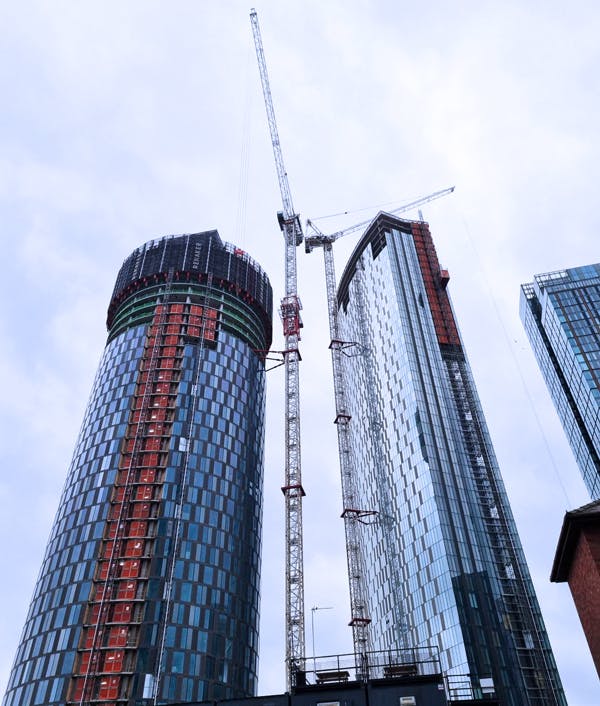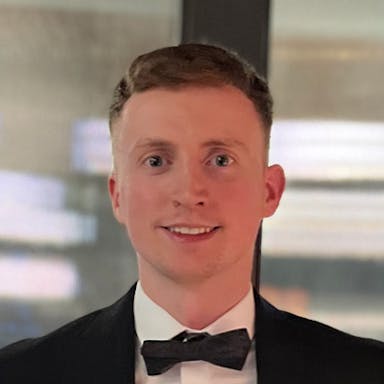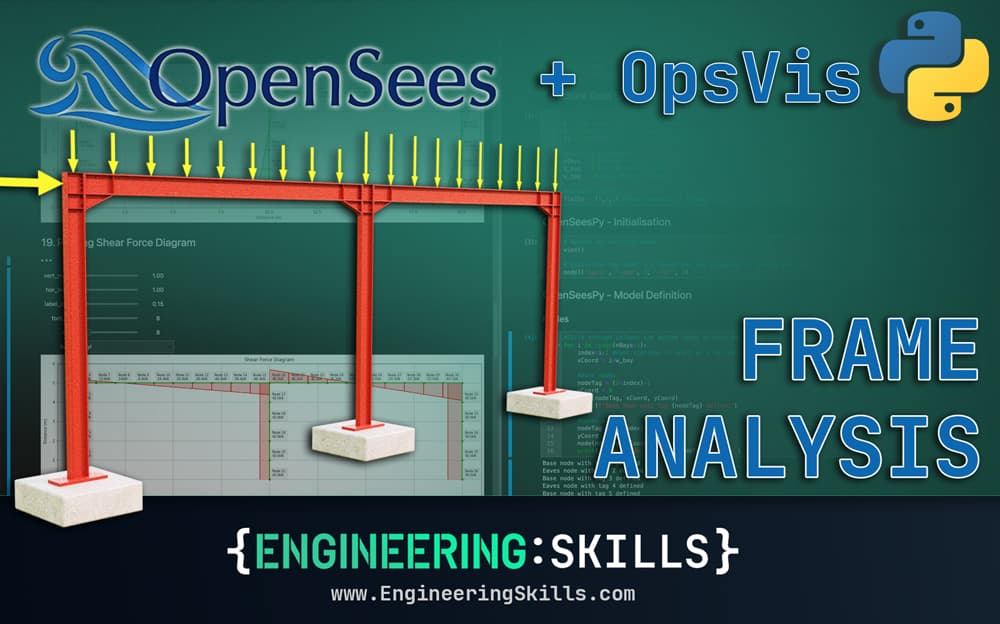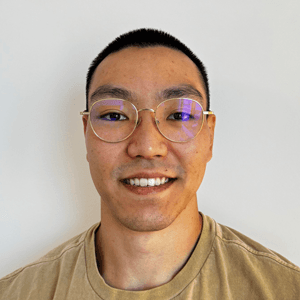The Road to Becoming a Graduate Structural Engineer
![[object Object]](/_next/image?url=%2Fimages%2Fauthors%2Fthomas_thompson.jpg&w=256&q=75)
The article below was written by Thomas Thompson - a Graduate Structural Engineer (and EngineeringSkills user :) based in the UK.
It's a little different from our usual tutorials but I think it's a great read for anyone who is considering a career in civil or structural engineering or is currently battling their way there!
🎓 Student membership
If you're a student, you might find the EngineeringSkills student membership helpful. It provides full access to a selection of courses, completely free. You can request access, using your university email address, here.
Enjoy!
Seán
Where my journey into civil engineering began
My journey into civil engineering and, eventually, structural engineering was a difficult one. Growing up in London, I was primarily focused on becoming a footballer and put little thought into anything else. It wasn’t a unique dream for the average boy living in London, but one I was convinced from an early age I would fulfil.
It wasn’t until the age of 18 or 19 that I realised that the trajectory of this dream was heading in the wrong direction. I started to enjoy playing football less, and it soon became apparent that I needed to pursue another avenue. Rather than sulk, I decided to ask myself personal and difficult questions…
‘If I could be anything, qualifications aside, who would I be? What would I do?’
Eventually, I concluded that engineering was my best chance of making something of my life. With little more to offer than a qualification in BTEC Sports, I managed to get an offer to study engineering with a foundation year at Liverpool John Moores (LJMU). Perhaps they needed to make up their student intake numbers, or it was a mistake on their part - either way, I felt incredibly blessed to have been accepted.
My university experience studying engineering was a tough one, as you might expect for an individual with little background in maths or science.
But I persevered, and after many sleepless nights in the library, hours and hours of study, unwavering faith that things would get easier and a huge amount of luck, I was awarded a degree. However, I left LJMU feeling like I had more to offer and that I had not lived up to my full potential.
I had barely scraped through, particularly on my structural engineering exams, which I had to re-sit twice.
Before I had a chance to decide what I would do next with my life, Covid took over the globe and lockdown hit.
Consistency and belief
It was during these days of isolation and time to myself that I delved deeper into structural engineering. I would spend numerous hours at the kitchen table revising structural analysis.
In truth, it became an obsession, born out of the desire to rectify my past failures and from a belief that has always resonated within me, that I can do anything If I put my mind to it. I was hell-bent on ensuring structural analysis wasn’t the exception to the rule.
Months of frustration went by, but I could see progress, albeit slightly, yet it was enough to keep me at the kitchen table until the subject started to click. And eventually it did! Each analysis question felt like a puzzle being solved and I started to really enjoy the process of it. This is when I got a nagging thought, one I couldn’t quite shake, the idea of redemption.
Back into the fire
I flirted with the idea of studying an MSc in Structural engineering, but I was intimidated by the difficulty and lacked confidence in my own ability. I was very aware of the mountain that lay before me and the sacrifice it would take to achieve it.
The hard work and dedication required would be more than I’ve ever been able to muster up before, not least because I would have to finance most of it myself whilst juggling a part-time job. But sometimes the only way out of the fire is through it, and I plucked up the courage to apply, because I was more scared of what would become of me if I didn’t.
Finding EngineeringSkills.com
I received an email from Salford University saying that my master’s application had been successful and that I would start in September 2020 - it was currently June. I was ecstatic for a moment or two, till panic set in.
Was I ready for this leap? What if I failed?
It was this fear and worry that led me to look for online courses that I could take to get me up to scratch. That is when I coincidently came across Dr Seán Carroll’s Fundamentals of Structural Analysis course. I immediately got it and studied its content as much as I could.
Whenever I got into trouble with a tutorial question, I would message him queries and explain my approach. Often, they would entail silly questions, and Seán would respond with his own calculations or explanations.
It was through these iterations of asking the silly questions that I started to have less of them, and my knowledge on the fundamentals of structural analysis grew. I completed the fundamentals course and immediately started the Mastering Shear Force and Bending Moment Diagrams course. I repeated the same studying process until it became second nature and I felt somewhat ready for my master’s degree.
Completing my MSc in Structural Engineering
My suspicions were correct—my MSc lived up to and exceeded the difficulty I had anticipated. It was a roller coaster of a year, a series of trials that stretched my engineering capacity beyond its previously known limit.
But thankfully, it was not in vain. I passed my master’s degree with a distinction and one of the highest dissertation scores on the course. And before I had time to celebrate my graduation, I had already received an offer to work as a structural engineer.
Seán’s courses weren’t all I needed to pass my MSc, but I can say with certainty that if I hadn’t studied them beforehand, I would have failed or quit before the first semester finished.
Who am I now - a Structural Engineer
I started this article by recalling the question I asked myself when I was 18 or 19—who am I now, and who do I want to become? The decisions I made in response to that reflection continue to ripple today. The journey I started back then has taken me to places I never thought possible.
Post graduation, I have gone from strength to strength and have worked on some of the tallest skyscrapers in the UK as well as projects on hotels, local refurbishments with varying materials like concrete, timber, steel, masonry.

Figure 1: Working on Manchester’s Skyline. Credit: DP Squared Ltd (A DeSimone Company)
More recently, I was elected to chair the IStructE YMG for the Northwest region. A position I’m grateful to be in, and one I did not anticipate years earlier.
If you’re interested in joining an IStructE community, please get in touch.
IStructE YMG Whatsapp Communities - click the links below to join your preferred group:
I will forever be grateful for the effort Seán has put in to ensure high quality content for those interested in pursuing a career in civil and structural engineering. His warm personality shines through the screen and his methods of teaching are easy to grasp. And because of their impact, they have allowed me to walk with newfound confidence and integrity. Finally addressing and putting to bed those questions that puzzled me at the start. I know who I am. I am a structural engineer.
Featured Tutorials and Guides
If you found this tutorial helpful, you might enjoy some of these other tutorials.
How to Calculate Beam Deflection
How to calculate beam deflection from first principles, with calculation examples

Dr Seán Carroll




